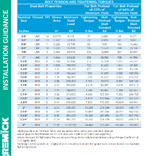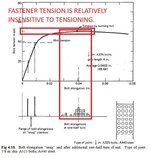What would be the consequence of tightening A bolt beyound its recommended bolt load. The recommended operational bolt load is 430 kN and we are planning to tight the bolt via hydraulic bolt tensioner and approximately achieving more than 670 kN bolt load/bolt. 430kN bolt load is recommended by vendor of the equipment. The operational condition of the equipment is 140 kg/cm2 and 150 deg Celsius.
How far these recommended bolt loads are from yield point of bolt?
Specs of bolt: 2-1/2" UN8 B7 studs.
How far these recommended bolt loads are from yield point of bolt?
Specs of bolt: 2-1/2" UN8 B7 studs.
Last edited:


